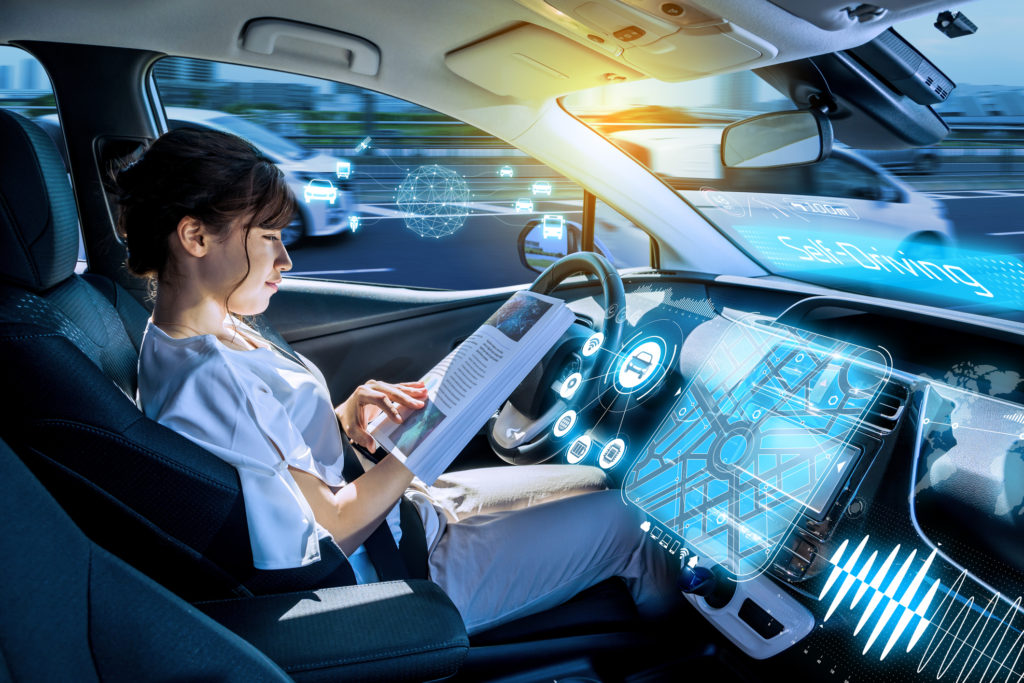Self-driving cars are an inevitability and will unlock the potential for cars to transform beyond a simple means of transport.
In the not too distant future, drivers will find themselves with a great deal of free time in-car. Rather than having to focus on driving, time can be spent on working, being entertained, or simply relaxing.
Audi calls this newly recoverable time “The 25th Hour” and recently revealed that it was working with The Walt Disney Company on a new type of media to fill the time. Audi and Disney have collaborated on a product called “holoride”, in which people wear VR headsets during a drive and can play VR games that mimic the ride by tailoring what happens in the VR experience to the actual driving experience, such as moving at the speed of the car and turning when the car does. The technology was developed by engineers at Audi Electronics Venture GmbH and presented for the first time at the CES 2019 in Las Vegas. The first virtual worlds of this showcase project were created in cooperation with Disney’s experts for Games and Interactive Experiences.
Interestingly, the holoride technology is not exclusive to Audi vehicles. It will be made available for all car manufacturers. Holoride wants to launch the technology to market within the next three years for backseat passengers with commercially available VR headsets.
Audi is not the only automotive brand looking to seize the opportunity self-driving cars offer. Back in 2016, Volvo, Ericsson, and Netflix announced plans for in-car entertainment for their driverless cars – technology which allowed users to stream video on the go, even without signal. Volvo’s Concept 26 model, unveiled at the LA Auto Show, featured a huge retractable screen built into the dashboard that swiveled into place.
In 2017 at CES, Honda demonstrated a proof of concept version of its Honda Dream Drive in-car virtual reality prototype featuring content from DreamWorks’ animated movie Trolls. Passengers were immersed in a virtual reality world triggered by the motion of the vehicle.
Immersive technology offers a huge opportunity to turn the car into a new kind of stage. In light of this, REWIND has been working on an R&D project to transform the back-of-car experience using AR. The team had to ensure hardware engineered to work on static ground worked in a moving vehicle. With some clever software tricks to get around relying on the phone’s positional technology (IMU), a reliable method for keeping AR entertainment fixed inside a moving car was achieved and tested with a platform.
Over the past few years, we have seen a great deal of R&D from forward-thinking companies that see the potential of self-driving cars. But, for consumers, the day-to-day reality of being driven to work by your own car, is still a few years away. In a report launched at then end of 2018, Futuresource Consulting stated that the first level 4 car, featuring a high, but not a complete level of autonomy, is expected in 2020.
While we wait for fully autonomous vehicles to become a mainstream commercial product, there is no denying that a media revolution is on its way. Self-driving vehicles are a new medium for creatives to work with and present a real revenue opportunity for a wide range of companies. When drivers can fully divert their attention from the road, suddenly windscreens can be turned into projector screens, in-car gaming console docks are an inevitability, and video streaming will take over from the radio.
The actualisation of a ‘moving living room’ will change the way we consume entertainment on the go.
This article originally appeared on Forbes.com.




